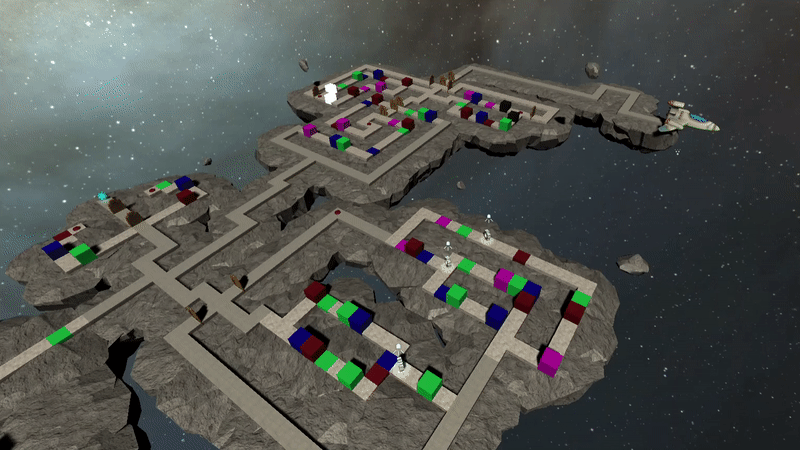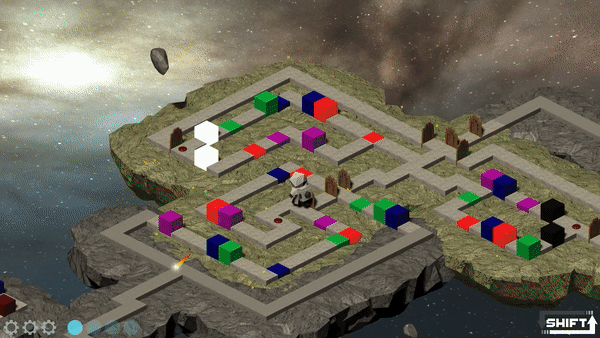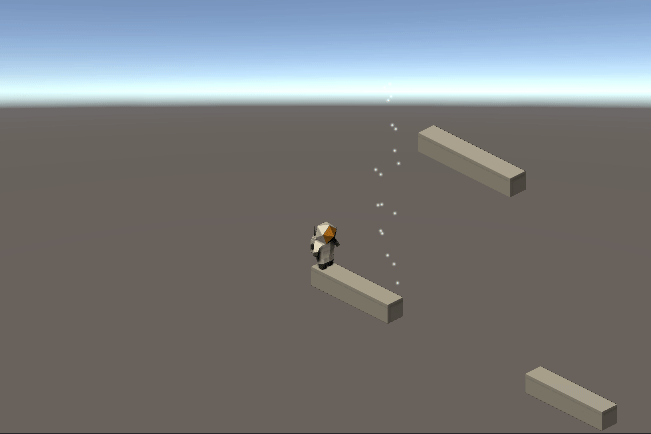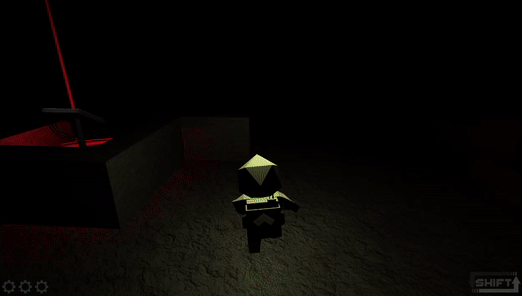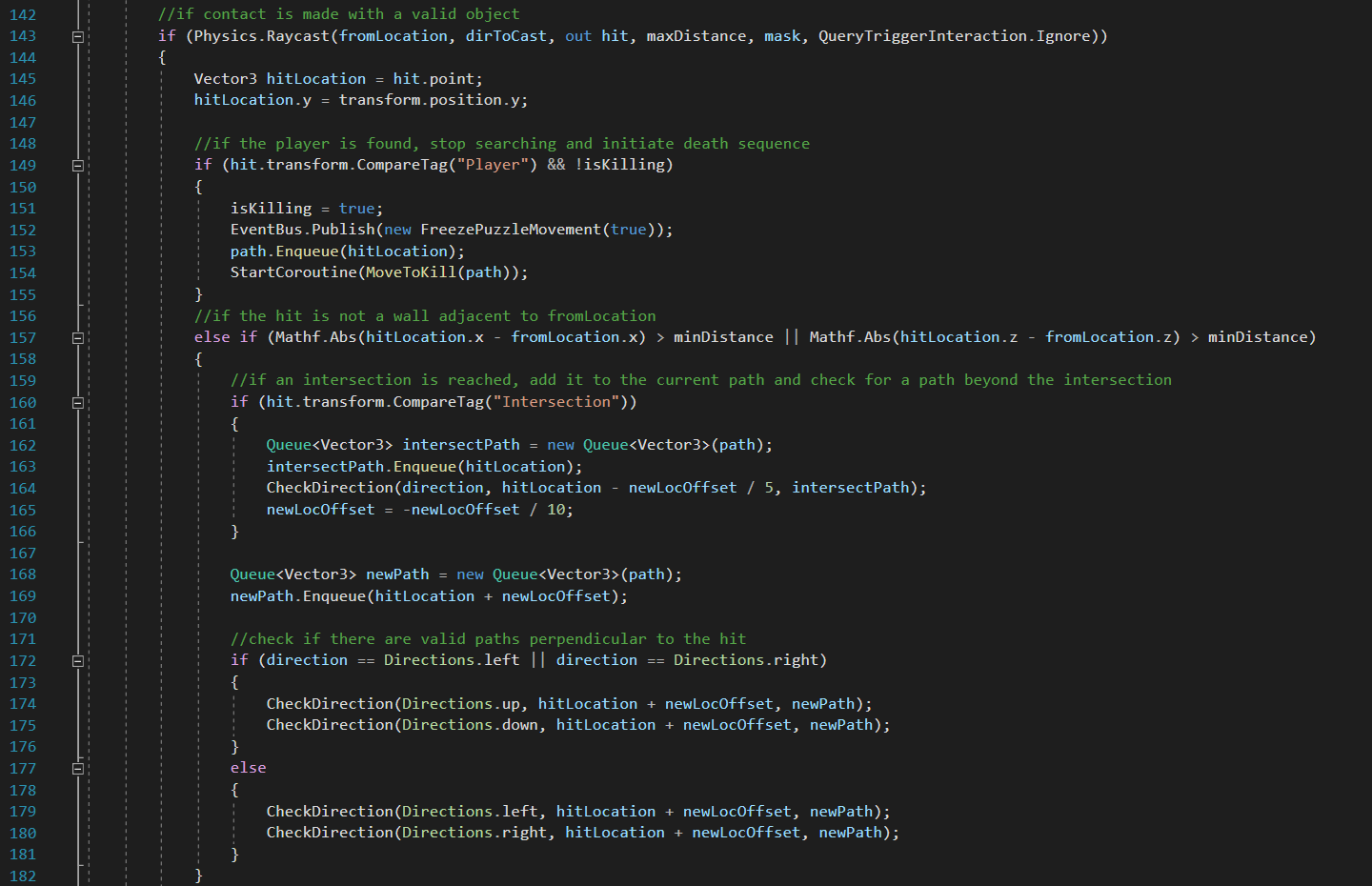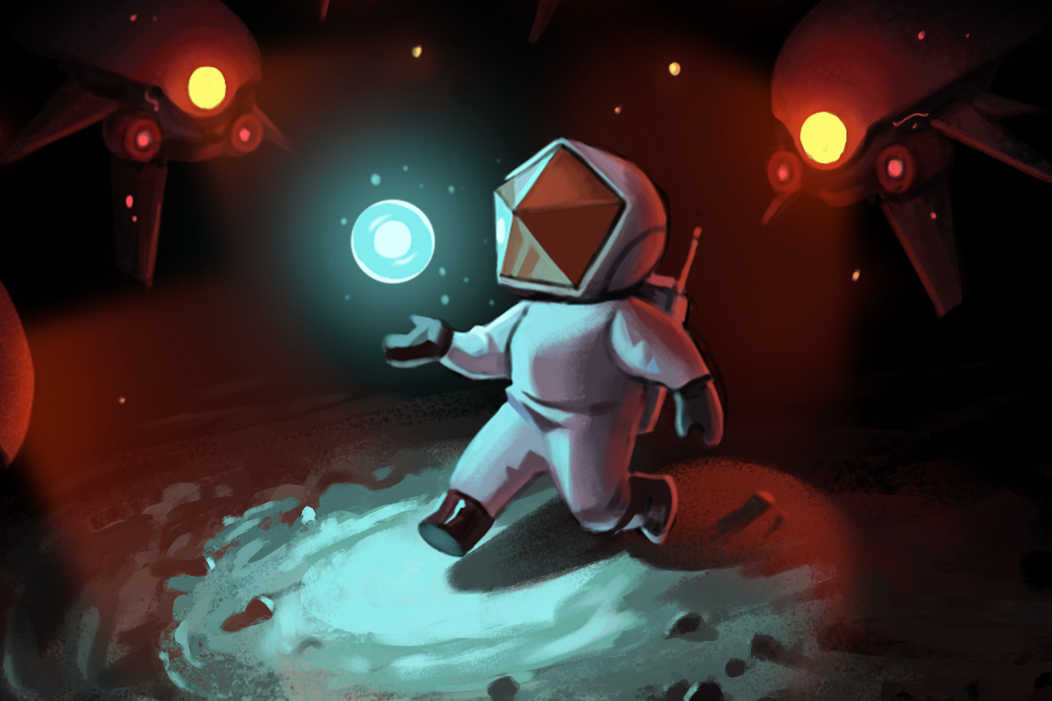
Flickernaut
Project Type: Independent
Engine: Unity
Language: C#
Role: Project Lead/Programmer
Originally a student project, the overwhelmingly positive feedback to Flickernaut led to a push for further development. Following graduation I became the project lead - onboarding new members, assigning tasks, and determining workflow. This project fully solidified my passion for game development and taught me more about the development process than any project I had previously worked on. Flickernaut is currently on indefinite hold.
Overarching Direction / World Design
Flickernaut consists of two elements that interact with each other - a top-down isometric puzzle (light) world, and a third-person stealth (dark) world. I was largely responsible for the creation of the light world. This included player movement, puzzle creation, and visuals. I was also responsible for the direction of the project’s future. Multiple new areas are in mid-production beyond what is available in our playable demo: writing, level design, world design, and the new gameplay mechanics of these areas were among my primary responsibilities.
Light World Functionality
Flickernaut can interact with the light world in a myriad of ways. From buttons that open new pathways, checkpoints, collectable objects, and a final chase sequence, I put a lot of work into ensuring that the moment-to-moment gameplay of this world is functional and interactive.
Player Jump
Many new mechanics and worlds were in production beyond what is viewable in the playable demo, such as air vents that allow Flickernaut to traverse the world in new ways. No matter the distance and direction from the vent to the intended destination, the player will always safely land where intended.
New Dangers While Solving Puzzles
Interactable terminals allow the player to manipulate rotating platforms to solve puzzles. This must be done with caution - should a valid path to the player from an alien be created during this process, the alien will proceed along that path to kill Flickernaut. The search to determine if a valid path is available is done so through ray casting within the confines of the current puzzle, removing the need to build a NavMesh in the light world. The directional queue created through this process is then traversed as the alien moves along the path to the player.

